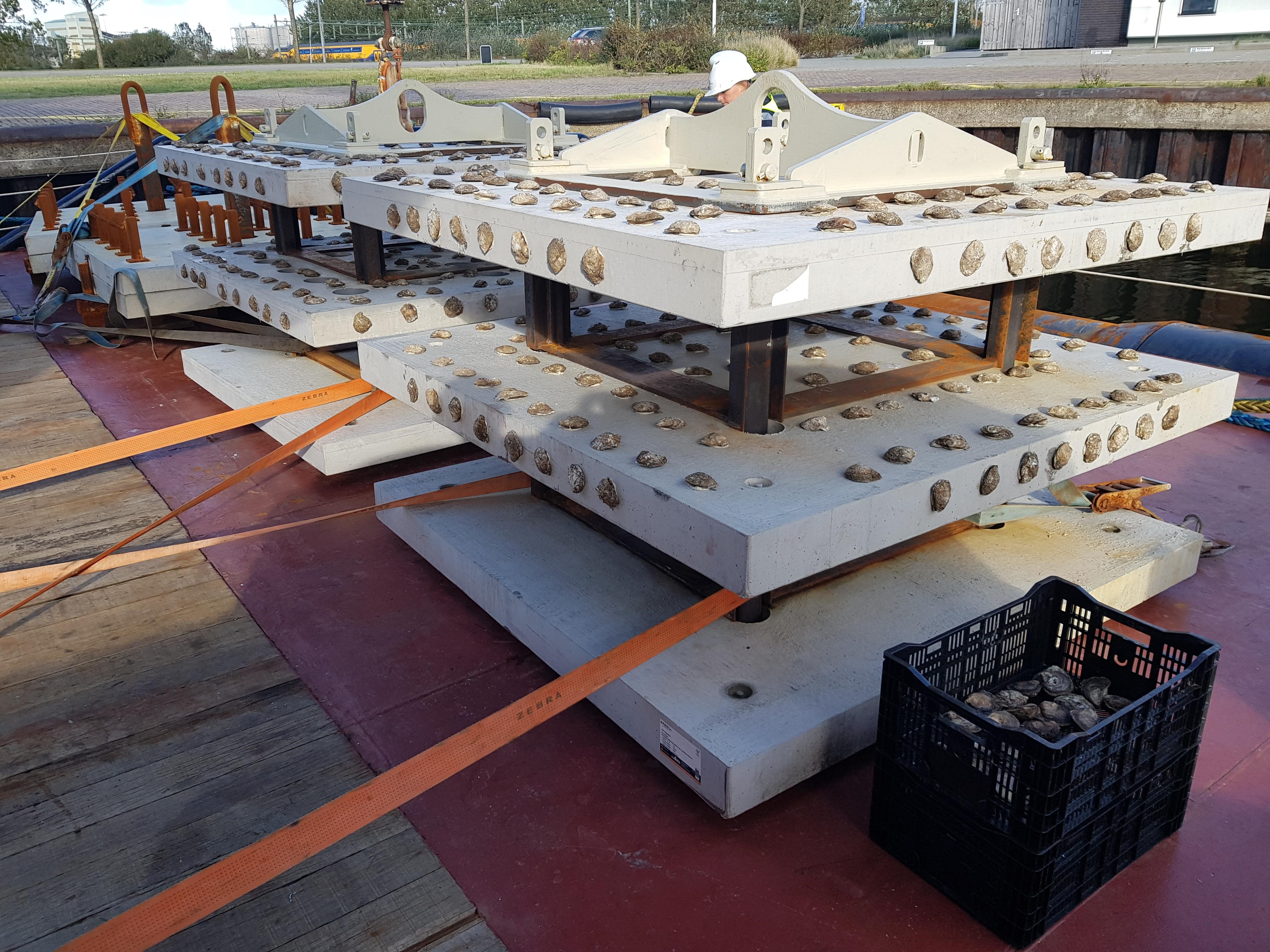Marine life may benefit from hydrogen production
Hydrogen and oysters seem to have little in common at first sight. But if more offshore wind farms are built in order to produce the renewable energy required for hydrogen production, oysters may benefit. The seabed surrounding the foundations of offshore wind turbines must be hard to prevent sand erosion.
The use of concrete foundations on which mature oysters are introduced produce a win-win situation. When the oysters reproduce they will form new oyster reefs. Renewable energy is produced and marine life flourishes!
It was with this in mind that civil engineering Master’s student Victor van Rie started his internship at the Van Oord engineering firm. He designed a concrete structure to serve as a starting point for the development of oyster reefs.
The European flat oyster (Ostrea edulis) used to form reefs that covered an area of the North Sea bed about half the size of the Netherlands. The reefs served as habitat for countless fish, crabs and lobsters. Diseases, overfishing and pollution have caused these oyster populations to virtually disappear. The hope is that the oyster reefs will regain ground with the help of projects such as this one. In October, a number of structures based on Van Rie’s design were lowered to the seabed next to turbines in the Borssele wind farm off the coast of Zeeland.
